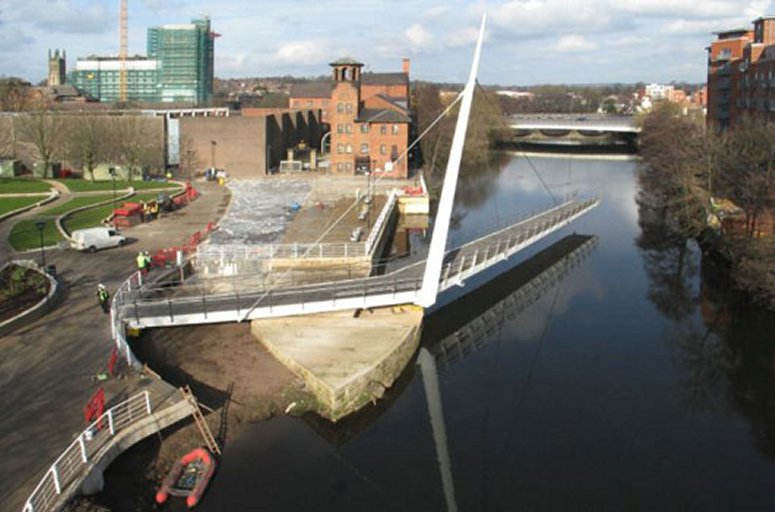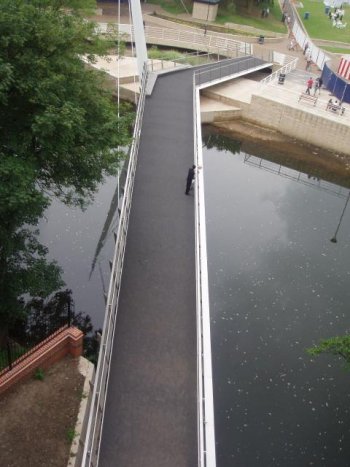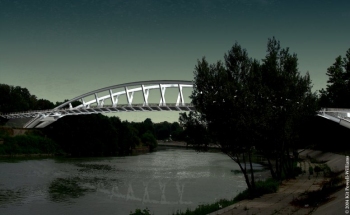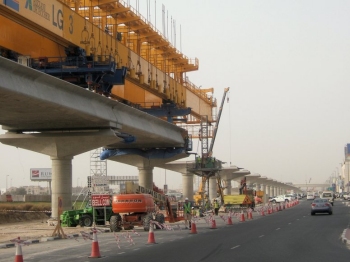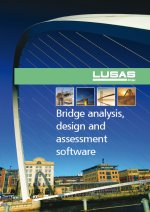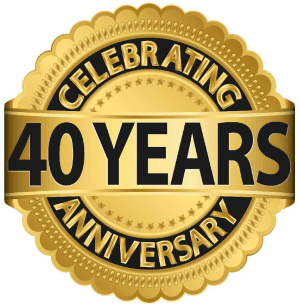|
Construction
and modelling
The deck is a stiffened plated box
girder, tapering in two directions. Its closed section provides the
torsional properties needed to carry the out-of-balance forces induced
by the geometry of the cranked backspan. Three prestressed cables
support the deck and carry the load back to a 20m high raked
needle-like mast.
Ramboll used LUSAS finite element
modelling to assist with:
- Design of the deck, cables and mast.
- Thermal performance assessment
- Developing a bridge construction
sequence.
Bridge operation
Because of the riverís flow rate, and
the ability for its level to rise rapidly by up to 1m the bridge was
required to open during flooding so as not to restrict the flow. In a
flood condition, the 90 tonne bridge swings off the river and folds
back into the newly constructed waterfront to Cathedral Green. When in
either of its fixed positions the nose end of the bridge is supported
on end bearings.
In use, the bridge swings utilising a
pintle bearing that is always in uplift and a very large central wheel
which supports the whole weight of the bridge. The tail of the bridge
is held down using a wheel running in a concealed track rather than by
using kentledge as with traditional swing bridges. Despite its weight
but because of its design, the operation of the swing bridge mechanism
can be effortlessly controlled by one person using a specially
designed console, or even be winched to a closed position by hand in
around 20 minutes.
|
